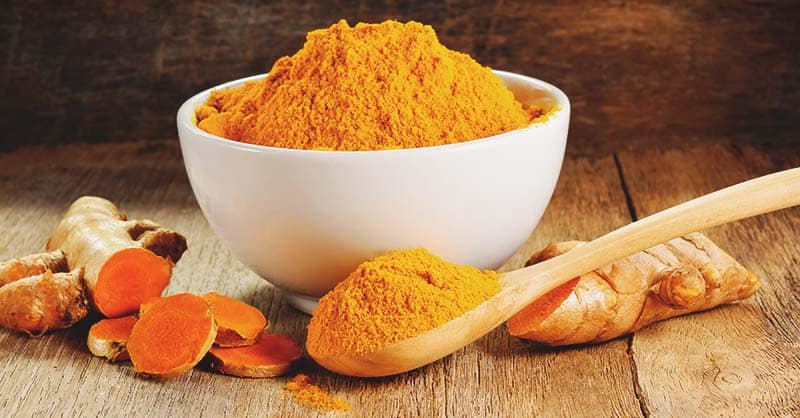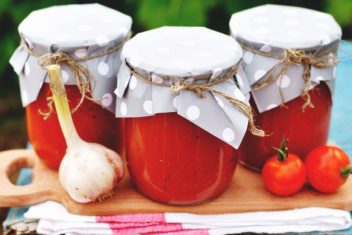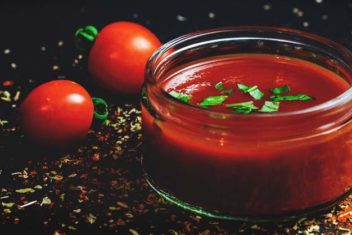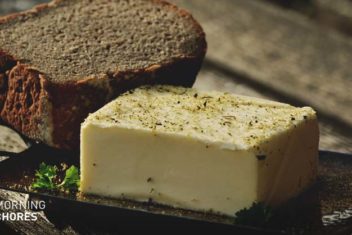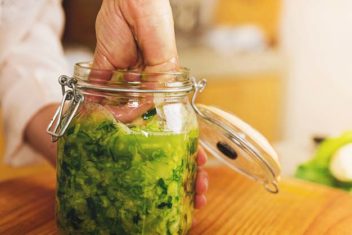I love to use a mortar and pestle to make powdered spice mixes for meals. When the pestle pounds seeds from coriander, mustard, cumin, cardamom, and more — the aroma is absolutely intoxicating! It’s like being whisked away to exotic locals without the stress of air travel.
There are some spices, though, that is no fun to process manually. Spicy peppers, for example, with their fiery capsaicin compounds can be downright dangerous. If you accidentally touch your eye after mashing up dried Naga viper or Carolina reaper peppers, you could end up in the hospital.
Other spices like ginger, turmeric, or shiitake may not pose the same risks for injury while powdering, but they can be tricky to work by hand. Even when fully dried, these spices retain a little bit of spongy spring that makes hand pounding more trouble than most people would want.
Luckily, with a little know-how and the right tools, you can make large quantities of dried, powdered spices, in just a few minutes of work.
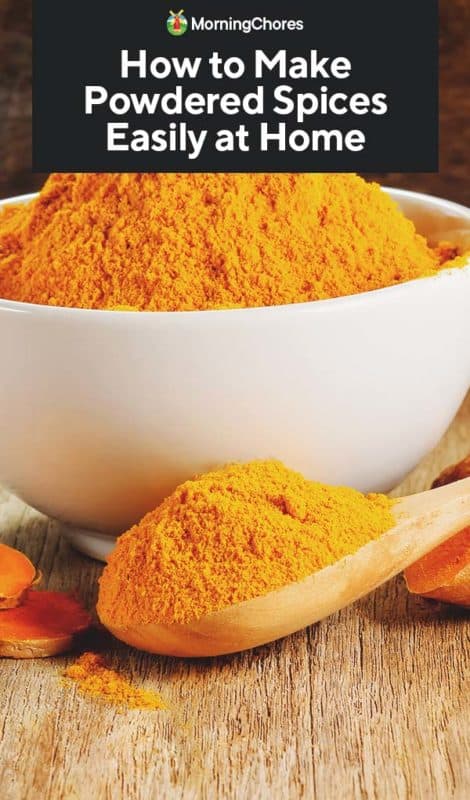
4 Easy Steps to Freshly Powdered Spices
Making large quantities of powdered spices is a four-step process. First, you dry the spices. Then you need to thresh some spices or flake others. After that, your spices can be powdered. Finally, you can package them in small quantities to keep them fresher longer.
Safety First
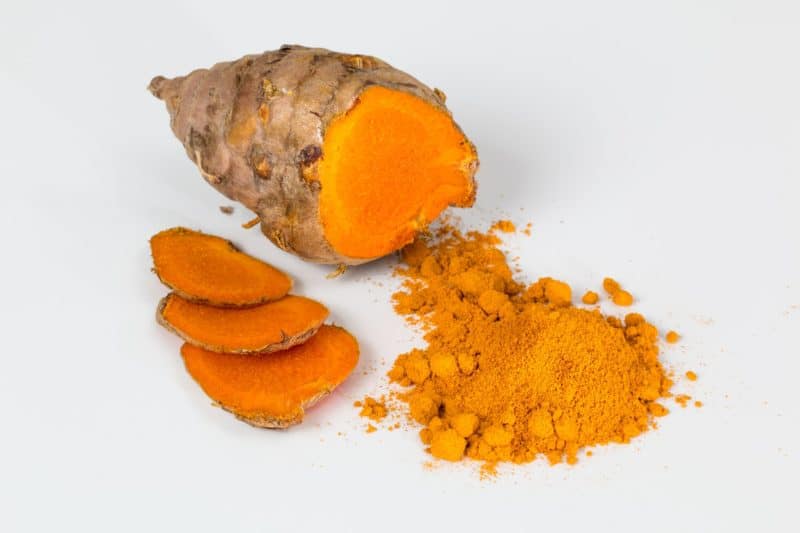
Before you start working through the steps, make sure you are properly equipped for working with the aromatic and volatile organic compounds (VOCs) released in the powdering process.
- Work in a well-ventilated space with good lighting for your safety.
- Wear eye goggles to prevent any spice debris from finding its way into that delicate tissue.
- For some spices, particularly peppers, consider wearing a face mask to filter out fine particles so they don’t enter and burn your lungs.
- Wear protective gloves that are disposable or can be easily washed with dish soap after use.
- Keep vinegar handy just in case your spicy spices make contact with your delicate skin.
These are the same basic safety procedures I use for making soap. So, if you already have a system for safe use of lye, then you should be good to go on powdered spice safety as well.
Step 1: Dry the Spices
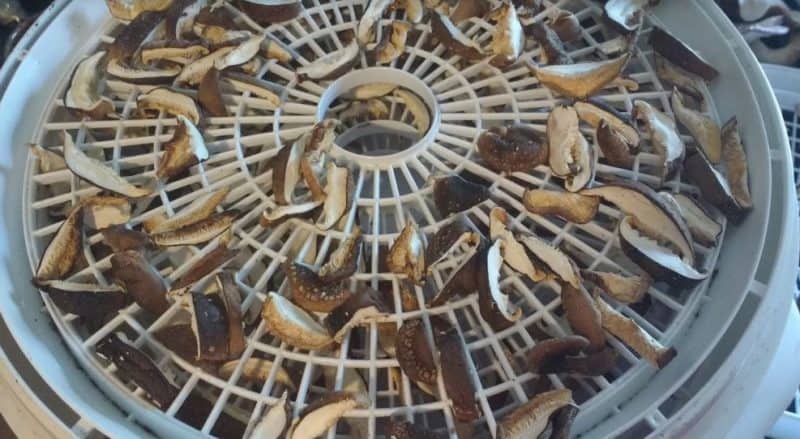
There are a few ways to dry your spice materials.
– Mushrooms
For things like shiitake mushrooms, slicing them very thin and laying them out in the sun works well.
– Peppers
For peppers like cayenne, gochu, or paprika, sewing them together on a pepper strand and hanging them in a dry location with indirect light is easy.
– Seed Spices
For seed spices, usually, you just need to clip the seed pods or heads and layer them loosely in a paper bag. Leave the bag open, in a dry location with good air circulation, until the seeds are dry. Herb drying racks also work just fine for seed spices.
Once dry, you’ll need to thresh to separate the seeds from the plant parts. Lay them on a tarp and beat them with a stick. Or, put them in a pillowcase and beat the pillowcase on a hard surface.
After that winnow the chaff. Just stand outside on a slightly windy day and pour the threshed spices from a high container to a low container. Heavy seeds will fall to the low container while chaff will blow away.
– Bulbs and Rhizomes
For spices with a lot of moisture, such as onion bulbs or garlic, remove the dried outer layers. Cut larger bulbs into pieces the size of a thumbnail for faster drying. For rhizomes like ginger, turmeric, and galangal, thinly slice the rhizomes in preparation for drying.
– Electric or Oven Dehydration
You can use either an electric dehydrator or oven to help retain the pungent aromas while also reducing drying times. Electric dehydrators set between 90-100°F work well. Using your oven on the lowest possible setting is also an option.
– DIY Sun Dehydrator
Alternatively, well-designed manual dehydrators are an energy-efficient option. These typically have black-painted air draws at the bottom to pull in warm air. Then, because hot air naturally rises, the sun-warmed air flows up into the dehydration tray area to create a natural heating and drying zone.
Step 2: Flake or Thresh Spices
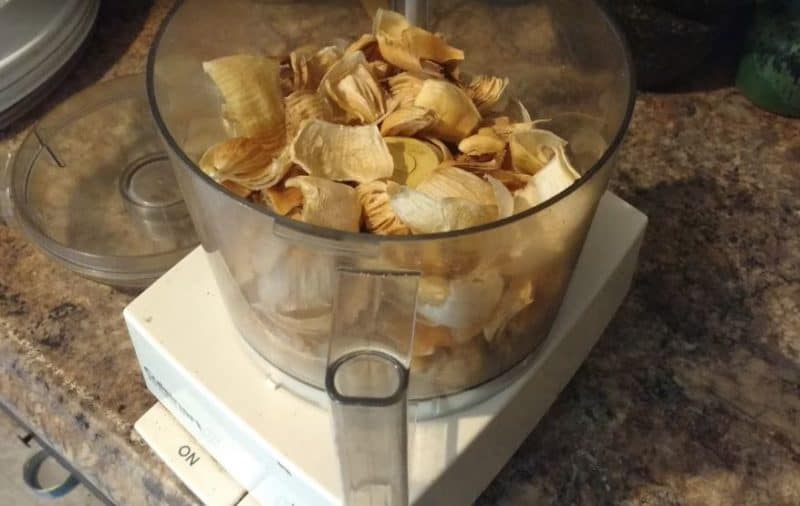
For spices like dried peppers, roots, rhizomes, or bulbs, their large size makes them hard to fit into a spice grinder. By first breaking them up into flakes, you make them more compact. My preferred method for this is to put them into a food processor.
With your gloves on, remove any parts of the plant you don’t want powdered such as the stems of peppers dried on a string. Place your spices into your food processor barrel. Then, pulse a few times to make smaller bits.
Food processors usually don’t get a fine grind on all your spices. But they do break them down enough that your spices fit easily into a spice grinder.
Step 3: Powder Your Spices
At this point, if you want to go manual, you can put your flaked spices into your mortar and use your pestle to do the powdering. However, a good spice grinder or coffee grinder will turn a 20-minute manual process into about 12 seconds of fine grinding.
Spice grinders generally have larger barrels so that you can powder twice the spice in one go. Good models also have removable barrels that make washing easy.
Coffee grinders work just as well. But for large quantities, it takes longer. Plus, you’ll want to carefully clean your coffee grinder with dish soap and maybe some vinegar or rubbing alcohol to remove all traces of spice if you also grind coffee.
Powdering in an electric grinder usually takes about 12-15 seconds for a fine grind. You may also need to push larger particles that end up on the sides of the barrel down toward the blade area and run it again.
Give your grinder 1-2 minute breaks after every 12-15 second grinding session to keep your motor from overheating. That will help extend the life of the grinder long term.
Step 4: Package Your Powdered Spices

I tend to make my powdered spices for the whole year in one round. However, to extend their shelf-life, I package them in smaller containers sized to last for about 3 months.
Store your 3-month supply on your spice rack. Put the rest in a dark, cool location until you need them.
My personal favorite way to store spices is in glass jars. They come in sizes and tend to keep the aroma where it doesn’t break down over time as plastic does. However, any airtight, food-safe container will work.
Powdered spices lose some of their aromas during processing. However, if you let them stay closed-up in your container for a week or two before you use them, the aroma intensifies again.
Powdered spices are best used within a few months of when you start opening and closing your container. But they will stay pungent for a year or more as long as that container is well-stored.
Spice Gardening
If you have the right tools and just go to it, you can have powdered spices in just a few minutes. The real work isn’t in the powdering. That’s a simple, straightforward process that anyone can do.
The part that takes time and effort is planting, growing, properly harvesting, cleaning, and curing your homegrown spices. Personally though, I don’t really consider that work. That’s also just good, cheap fun if you do it right! Plus, it makes you more self-sufficient on the spice front as well.
